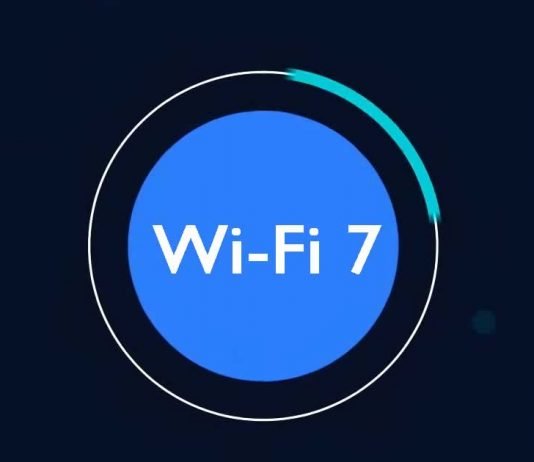Many devices now use the Wi-Fi 6 standard, and Wi-Fi 6e, which also utilizes the 6 GHz spectrum, is becoming more prevalent. However, Wi-Fi 7, the next generation of the radio standard, is already on the horizon. Manufacturers have already announced the first modems and products for this new generation. What advancements can we expect from Wi-Fi 7?
Contents
Wi-Fi 7: The Next Generation of Wireless Connectivity
The upcoming Wi-Fi standard, known as Wi-Fi 7 or IEEE 802.11be dubbed Extremely High Throughput (EHT), is designed to provide faster speeds for all devices with greater efficiency. It operates on all three bands (2.4 GHz, 5 GHz, and 6 GHz) to maximize available spectrum resources. If you’re experiencing constant buffering, lag, or congestion, upgrading to a Wi-Fi 7 router could be your solution.
Wi-Fi 7 is designed to provide faster and more efficient internet connectivity for all devices, unlike Wi-Fi 6, which was created to accommodate the increasing number of devices. The new technologies introduced in Wi-Fi 7, such as 320 MHz ultra-wide bandwidth, 4096-QAM, Multi-RU, and Multi-Link Operation, help achieve this goal.
Speed and Efficiency Like Never Before
Wi-Fi 7 will offer speeds that are 4.8 times faster than Wi-Fi 6 and 13 times faster than Wi-Fi 5. It’s designed to support a wider range of scenarios and can provide a throughput of up to 46 Gbps, which is a significant improvement from the 9.6 Gbps provided by Wi-Fi 6.
The 320 MHz ultra-wide bandwidth allows for more data to be transferred at once, resulting in faster speeds. The 4096-QAM (Quadrature Amplitude Modulation) is a method of combining two amplitude-modulated (AM) signals into a single channel, doubling the effective bandwidth. The Multi-RU (Resource Unit) allows for more efficient use of the available spectrum, and the Multi-Link Operation allows for simultaneous data transmission across different frequency bands and channels.
Lower Latency and Greater Capacity
Wi-Fi 7 offers more than just speed. It also enhances network capacity and minimizes latency. Thanks to Multi-Link Operation (MLO), Wi-Fi 7 devices can transmit and receive data across multiple frequency bands and channels at the same time. This results in faster data transfer, lower latency, and better reliability, making it ideal for newer technologies such as VR/AR, online gaming, remote offices, and cloud computing.
The MLO technology allows the new Wi-Fi standard to provide up to 100× lower latency compared to Wi-Fi 6, and up to 5× greater network capacity. This means that Wi-Fi 7 will provide faster internet and a more reliable and efficient connection, even in environments with many connected devices.
A Game-Changer for Businesses and Entertainment
Wi-Fi 7 is poised to significantly improve business operations. With its introduction, frustrating delays in logging in, disrupted virtual meetings, and internet congestion will be eliminated. The benefits of Wi-Fi 7 include seamless and reliable experiences, enabling lag-free meetings with global partners across different time zones and efficient telecommuting with no delays in accessing cloud-based resources.
In addition, the new Wi-Fi standard is set to bring about a major change in the entertainment industry. You can now indulge in large-scale online games, immersive AR/VR experiences, and 4K/8K videos without any buffering, delay, or congestion — anytime and anywhere. With Wi-Fi 7, you’ll be well-prepared to explore the bustling digital world of the Metaverse along with everyone else.
The standardization of Wi-Fi 7 is expected to be completed by early 2024. However, the first products, like routers and smartphones with Wi-Fi 7 capabilities, have already been announced. Companies like Intel, Broadcom, Qualcomm, MediaTek, and TP-Link are at the forefront of this revolution.
Wi-Fi 7 is not just about faster internet — it’s about a more efficient, reliable, and seamless online experience. It’s about enabling applications that require highly consistent and precise results, such as AR, VR, HD multimedia gaming, and next-gen AR applications. The increased bandwidth and speed will allow for flawless streaming of 4K and 8K content, immersive VR experiences, and much more.
In conclusion, the new Wi-Fi standard is set to replace the current standards, Wi-Fi 6 and 6e, and will be incorporated into all products in the future. It’s not just about faster internet – it’s about a more efficient, reliable, and seamless online experience. The future of wireless connectivity is here, and it’s called Wi-Fi 7.


